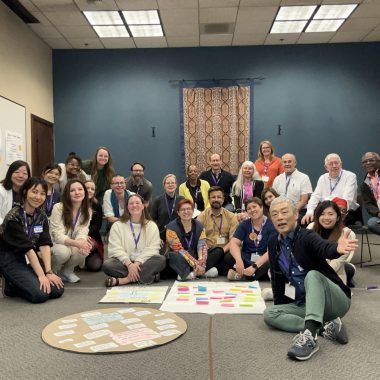This post is also written in the following language:
![]() 日本語 (Japanese)
日本語 (Japanese)
Can facilitation lead to a specific conclusion?
This is a question that is sometimes asked by clients or facilitation skills training participants. It means, the meeting organizer has a conclusion that he or she wants to bring to the meeting from the beginning, but is it possible to use facilitation skills to guide the participants to the desired conclusion in a natural way so that they are not aware of it? This is what this question means.
If a very skilled facilitator does it, it may be technically possible. Sometimes we call it Facipulation (Facilitation + Manipulation). However, that may be able to happen in the meeting room, and it is not clear whether the participants will make a commitment to the conclusion after they leave the meeting room.
The facilitator can be responsible for what happens in the meeting room, but commitment after the meeting should be ensured by the participants. Therefore, the meeting organizer must consider what needs to be done to elicit the greatest commitment from the participants after the meeting is over.
What are the reasons for not being able to speak out the intent?
On the rare occasion when we professional facilitators are offered to facilitate, we are asked by clients, “Can facilitation lead them to a particular conclusion?” At that time, I always ask clients, “If you have a certain conclusion, why don’t you tell the members about it, direct them, or persuade them? I ask back.
It is quite normal for a leader to have his or her own vision and to persuade members to “do this,” and it is also a good attitude for a leader to engage in dialogue with members until they are convinced, rather than giving them unilateral orders.
However, while hiding one’s intentions, leading in a particular direction doesn’t work. Most of the time, hidden agendas are debunked and only create distrust among members.
If you find it difficult to persuade people head-on, why is that? You may have to reflect on the cause. It is highly likely that there is some kind of problem in the leadership or team relationship.
In such cases, we, as professional facilitators, start discussing how to improve the situation. Sometimes the purpose of facilitation changes to resolving the reasons that make it difficult to state intentions up front or to persuade.
Facilitation of discussions to review the request with the client

For a professional facilitator, facilitation when discussing the objectives and expectations of a request with a client is rather more important than the facilitation practiced at a meeting or workshop. If you take the wrong direction or get ahead of yourself in methodology here, on-site facilitation will not be successful.
In this phase of facilitation, which can be called the requirement definition phase, a very high level of facilitation skill is required.
What is the client’s goal? Why facilitation? How far do they expect the facilitator to go? In many cases, clients are not clear to answer these questions.
Meanwhile, there are many cases in which the client is too much reliant on a facilitator. “If I ask a professional to do the rest, he or she will take care of it.”
Therefore, we must start by listening carefully to the facts behind the request and the client’s thoughts about it, and then make the client aware of what they really have to address. In some cases, we may reach the conclusion that the solution is not facilitation.
Sometimes we receive a great request but end up without ever going to the facilitation site. However, if we are able to bring some awareness to those who need facilitation and guide them in the right direction without on-site facilitation, it is one of the best facilitation.















